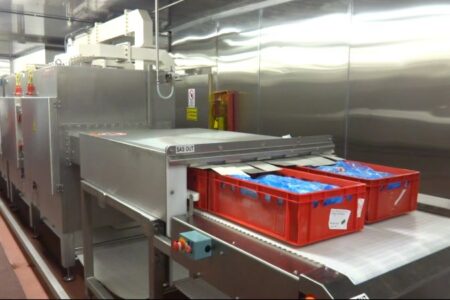How well do you know your animals? Probably not well enough

By Richard Sibbit, managing director for animal health, Proagrica
The agriculture sector has a problem. It is haemorrhaging valuable insights across many of the on- and off-line touchpoints that produce goes through on the journey from field to fork.
A vet selling a bottle of medicine to a farmer might have no data on how much the farmer has left or how many animals it’s been used on. It’s a similar story for many across the supply chain who have no idea where to get producer, animal welfare or production data from. At the moment, there are often no standardised management systems recording what was sold to a given farm or when – and that should be a real concern.
Why traceability matters
Inaccurate and/or error-prone on-farm data capture methods are a big problem for many businesses, not to mention their customers: farmers who must be able to demonstrate compliance to their own customers on animal health, animal welfare and their risk management obligations. As global diseases increase, and more consumers demand to know more about where their food has come from, there’s growing pressure on retailers, manufacturers and farmers alike to be transparent.
If you think about it from a consumer standpoint, they see those players not as competitors, but as industry partners. It does not make for a fluid supply chain, or indeed industry, for everyone to be competitive – or at least not on everything.
Instead, responsible businesses need to collaborate and share data by being open and honest. That will enable easy tracking and tracing, and avoid the silos and data islands that currently plague the sector and will continue to spring up as new start-ups enter the market.
The value of benchmarking against historical data
The great irony is there is so much useful data available. Vets might track animal welfare data and know what the animals look like and what conditions are they kept in, but this knowledge isn’t kept in farmer, producer or manufacturer systems. Farmers might know what products are used to clean their chicken coops and cattle barns, but no-one else does.
There is also a lack of benchmarking, where current data is marked against historical information to highlight trends and areas for improvement. Benchmarking is vital to prove that a given action or product can be profitable and for financial decision makers to see that the initial outlay is worth it.
All too often though, those within the supply chain fail to track and benchmark the data in a useful way – and even if they do, they usually don’t share those insights with their partners.
Creating a culture of collaboration across the supply chain
The fact that so much data exists shows that this is not a technology issue, but one of collaboration. Many businesses in animal health, especially innovative start-ups, are trying to monitor disease by using technology to find out if animals are moving in the right way, drinking enough and kept at the right temperature.
However, this data only exists in silos and only for those that pay for the technology or those that provide it. Given there are now so many (competing) players offering data tracking services, and typically only for their own products, we find ourselves in a disconnect between what should be possible and the reality.
The issue is even more acute when we consider food supply chains are so often global – the chicken you’re eating could have come from a country where different rules and regulations apply. Places like England and Wales that apply the Red Tractor badge from Assured Food standards don’t necessarily answer this challenge either.
When different produce from different regions, even crops for animal feed, is being combined, it muddies the water and makes traceability harder. ‘Organic’ is in the eye of the beholder.
Why this all matters
Consumers are more clued-up than ever. They have a lot of questions: is it grass-fed? Are there really no antibiotics? And, of course, is it free range or battery? If the supply chain fails to work together to obtain and analyse the necessary data, it can only answer with a shrug.
This is an issue of trust. Consumers need more than labelling, they need reassurance. While there is no real collaboration, the sector will struggle to gain that trust.
There’s little doubt collaboration will improve over time; the question is whether that will come about due to the carrot or the stick? The former is preferable, but for that to happen the industry needs to see collaboration is profitable.
Data creates insights that add real value. Comparing collaborative data in disease tracking, compliance and monitoring antibiotic usage also goes into benchmarking, market share analysis and performance analysis for customers. Once we appreciate this, the industry can make great steps forward.
However, can we do so in sufficient time to keep consumers on-side?
Richard Sibbit is managing director of the Animal Health division of Proagrica. Drawing on over 25 years of experience, Richard leads the Animal Health strategic drive for global expansion in Europe, APAC, US and Canadian markets.



